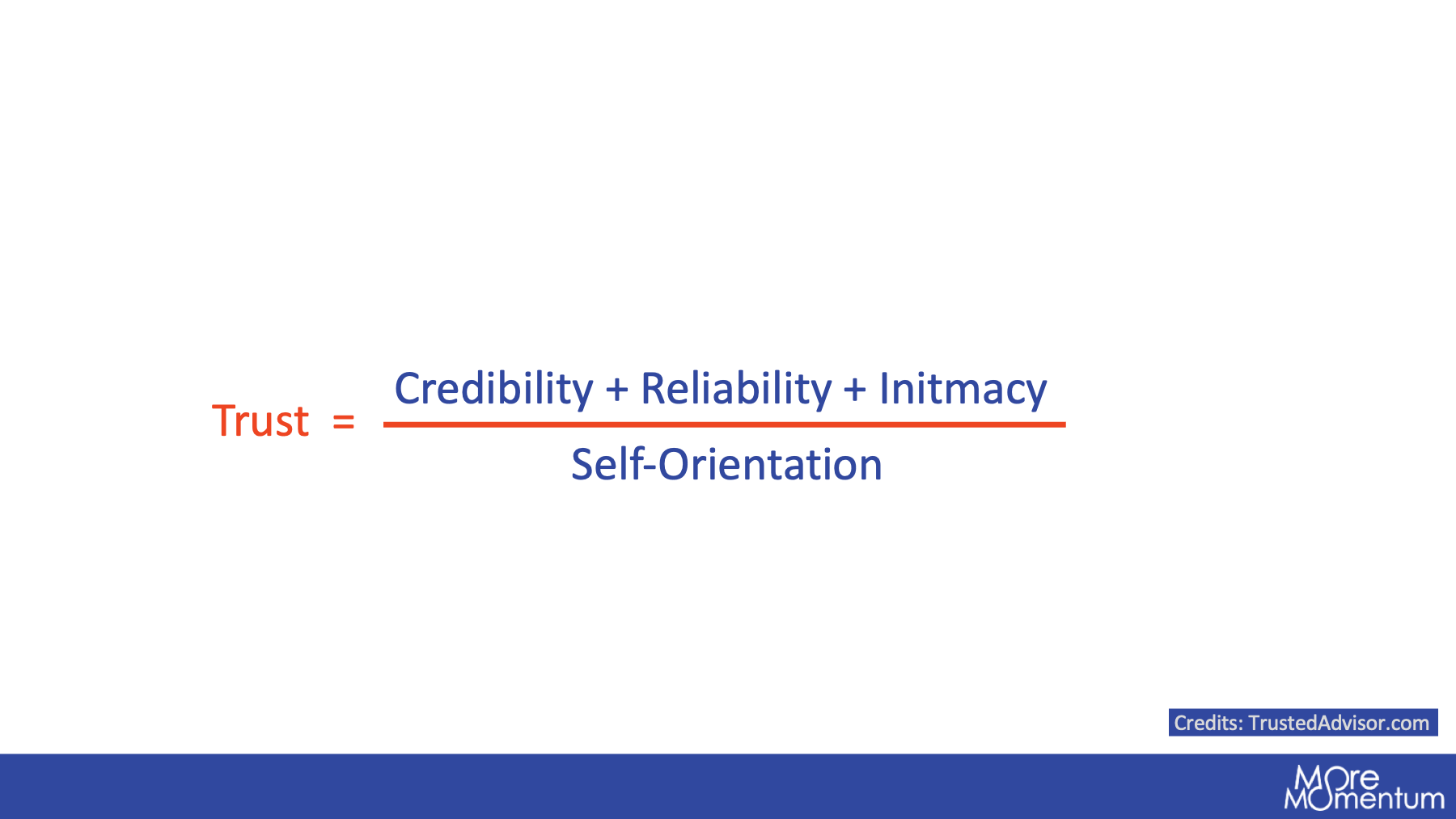Building Trusted Partnerships in the Digital and Remote Era
In the digital-first service era, embracing digitalization, redefining customer touchpoints and advancing service models for partnerships are...

Trust-building in digital services is no longer what it once was. Manufacturers require a new approach to remain competitive and maintain strong customer trust.
Trust drives growth in B2B manufacturing services. Customers buy, renew contracts, and recommend companies they trust.
Traditionally, trust grew through face-to-face meetings and personal interactions. Today, these methods no longer work as services become digital and remote. A younger generation prefers digital channels, trusting clear online communication.
Manufacturers must rethink how they build trust digitally. They need a structured approach to clearly demonstrate competence, empathy, and reliability without physical meetings. Companies that master digital trust methods stay competitive, attract new customers, and grow business.
Many businesses still believe trust can only come from face-to-face interactions. They assume customers need in-person meetings, site visits, or physical handshakes to feel secure. However, this idea is outdated. Digital and remote interactions have become common, changing how trust forms.
For B2B manufacturing companies, building trust digitally is challenging. Without face-to-face contact, customers can't easily see a supplier’s skills, quality, or commitment. Showing technical competence through video calls or online documents can be difficult. Companies struggle to convince customers they fully understand their unique needs when meetings are virtual.
Creating personal connections also becomes harder. Remote interactions feel less warm and personal than in-person visits. Customers might doubt whether the supplier truly cares about their business. Demonstrating genuine empathy or interest remotely requires careful thought and planning.
Additionally, digital interactions can increase customer scepticism. Buyers wonder if providers are being truthful or hiding something behind polished websites and presentations. Without clear transparency, customers may feel uncertain and hesitate to build stronger relationships.
Failing to adapt to digital trust can lead to serious consequences. Companies that hold onto traditional trust-building methods risk falling behind. Customers might choose competitors who build trust better through digital channels. Businesses may lose opportunities, face lower customer loyalty, and see fewer renewals and referrals.
Even maintaining old-style human interactions—like unnecessary visits or meetings—can cause problems. Customers might feel annoyed or pressured if these interactions offer no clear value. This harms trust even more, pushing customers away rather than strengthening relationships.
To succeed today, companies need a fresh approach. They must develop clear, effective strategies to build trust digitally and remotely. Without this change, manufacturers risk losing ground to smarter competitors who embrace digital trust-building methods.
When customers lose trust, businesses quickly feel the impact. Customer retention drops as buyers start looking for providers they feel they can trust more. Companies may notice contracts not being renewed or orders getting smaller each year. Upselling extra services or products becomes much harder. Customers who doubt your commitment or skills are less willing to invest further.
Referrals also decrease dramatically. Businesses rely heavily on customers recommending them to new clients. Without trust, existing customers won't confidently suggest your services to their contacts. This loss of word-of-mouth marketing directly hurts growth.
Manufacturers who fail to build digital trust face serious competitive disadvantages. Many companies are already mastering digital trust-building. They use clear communication, transparency, and tailored online interactions to strengthen customer relationships. Customers naturally shift toward these businesses because trust feels easier and clearer.
Competitors who manage trust digitally don't just keep existing customers—they win new ones. Customers actively seek providers that understand their digital needs. These competitors increase their market share quickly, leaving traditional companies behind.
The urgency to build trust digitally cannot be overstated. Digital-native competitors are growing fast. They leverage strong online trust strategies to attract customers who prefer digital interactions. These businesses don't wait for customers to ask for digital trust—they proactively deliver it.
If traditional manufacturers delay adapting, they risk losing their position in the market. The time to build digital trust isn't tomorrow—it's now. Companies must take immediate action to maintain their competitive edge.

To successfully build trust digitally, businesses need a practical framework. One well-known approach is the trust model developed by Trusted Advisor (trustedadvisor.com). This model breaks trust into four clear parts: credibility, reliability, intimacy, and self-orientation.
Using a clear model helps companies design and measure trust effectively. Without a structured approach, trust-building efforts can become unclear or inconsistent. By using the trust model, businesses gain practical tools to manage, monitor, and improve trust consistently, even when interactions are digital and remote.
Credibility is about demonstrating your company’s expertise clearly and effectively. In digital interactions, credibility means making sure your customers see and believe your knowledge and skills. Customers trust suppliers who clearly know their products, industry, and customer needs.
Building credibility digitally starts with thought leadership. Thought leadership means creating valuable content—such as blogs, videos, and webinars—that shows your deep understanding. For example, if you specialise in predictive maintenance, creating short videos explaining how it works or writing clear articles about industry trends helps customers see your expertise directly.
Content marketing helps reinforce this digital credibility. Regularly publishing relevant content on your website, social media, or industry platforms builds your reputation. It shows customers you stay informed, care about their challenges, and have practical solutions.
Customer testimonials are another powerful way to show digital credibility. Online reviews, case studies, or short customer videos provide real-world proof of your expertise. Testimonials reassure potential customers that others have trusted your services successfully.
Transparent communication is equally important. Clearly showing your capabilities, service processes, and even limitations helps customers trust your honesty. Customers appreciate providers who openly discuss both strengths and areas they are improving.

GE Digital is a strong example of building credibility digitally. They consistently publish articles, webinars, and videos about predictive maintenance, digital twins, and advanced analytics. Customers looking for experts naturally trust GE Digital because their expertise is clearly visible. Their consistent content positions them as leaders in digital industrial services.

Another good example is ABB Motion Services. ABB creates informative whitepapers, case studies, and practical guides about their solutions. They showcase real-world examples of how customers benefit. By openly sharing detailed insights, ABB builds confidence in their expertise, convincing customers they are credible and capable digitally.
Manufacturers can quickly start improving digital credibility. First, regularly publish helpful, practical content showing your knowledge. Keep it simple and clear so customers easily understand your message.
Second, actively collect and share customer testimonials. Ask satisfied customers for short reviews or video feedback, and post these on your website and LinkedIn. Genuine feedback builds trust quickly.
Finally, communicate transparently. Be honest about what you can and cannot deliver digitally. Customers trust providers who clearly and openly set expectations, even online.
Reliability is about consistently meeting promises and customer expectations. In digital interactions, reliability means customers can trust you'll deliver exactly what you promised—every single time. Reliable companies set clear expectations and meet or exceed them consistently, creating confidence and trust.
In remote and digital channels, customers pay close attention to consistency. Because direct human contact is limited, even small mistakes or delays feel bigger. Customers easily become uncertain if digital promises aren't kept. To build trust digitally, reliability must be clear, predictable, and proven through actions.
First, clearly communicate your processes and set realistic expectations. Service Level Agreements (SLAs) must be simple, transparent, and openly shared. Customers trust providers who clearly state what to expect—how quickly issues will be solved, when services will be delivered, and exactly what happens if something goes wrong.
Second, streamline your processes to ensure consistency. Use digital tools to monitor service quality closely. Automate notifications to let customers know what is happening at every stage. Simple, regular updates reduce uncertainty and reassure customers you’re actively managing their needs.
Proactive issue management is equally important. Don't wait for customers to notice a problem. Instead, actively identify and solve issues before customers see them. This approach builds strong confidence, showing customers you’re always in control and reliable digitally.

SKF Remote Diagnostic Services is a great example of digital reliability. SKF uses advanced sensors and digital monitoring to predict and manage equipment issues. Customers receive proactive notifications long before problems occur. This consistent, reliable service creates deep customer trust because it delivers predictable outcomes.

Siemens Mobility also demonstrates reliability digitally. Siemens uses clear digital SLA tracking, allowing customers to monitor service status in real-time. Customers always know exactly what is happening, when issues will be solved, and what actions Siemens is taking. Transparency in digital SLAs helps Siemens consistently meet customer expectations, strengthening trust.
Manufacturers can improve reliability by simplifying SLAs, providing clear expectations online, and proactively managing issues. Digital reliability isn't complicated—it's about doing exactly what you promise, every single time. By consistently delivering digitally, manufacturers build stronger customer trust and loyalty.
Intimacy means creating personal connections with customers. Traditionally, intimacy developed naturally through face-to-face interactions. Today, digital and remote channels challenge that closeness. Yet, customers still want providers who understand their unique needs and care about their success.
In a digital environment, intimacy shows customers they're valued. Without personal interactions, business relationships become impersonal or transactional. Providers who create digital intimacy make customers feel heard, understood, and personally connected—even without meeting face-to-face.
Personalised interactions are key to digital intimacy. Use customer data wisely to understand each customer's unique situation and preferences. Regularly tailor your communication so customers feel you're speaking directly to them, not sending generic messages.
Tailored services also increase digital intimacy. Offering services based on individual customer needs and priorities builds trust. Customers feel valued when services clearly match their specific challenges. They know you're genuinely focused on their success, not just your own business goals.
Transparent dialogue builds intimacy, too. Openly discuss customer concerns, listen actively, and respond thoughtfully. Customers appreciate honest conversations and clear explanations. Even digitally, transparency creates closeness and understanding, strengthening the relationship.

Atlas Copco effectively builds digital intimacy through Customer Success Managers. Each manager closely monitors individual customer needs, proactively checking in through digital channels. Regular personalised calls or video meetings ensure customers feel genuinely understood. Customers experience consistent personal care, even remotely, enhancing trust and loyalty.

Caterpillar also demonstrates digital intimacy through personalised Customer Value Agreements. These agreements clearly address specific customer priorities, such as uptime, cost control, or performance. Caterpillar tailors each agreement carefully, openly discussing needs and expectations. This tailored, transparent approach shows genuine care, increasing customer trust significantly.
Manufacturers can enhance digital intimacy by investing in personal interactions, tailored services, and honest dialogue. The key to digital intimacy is showing genuine understanding and care, even without physical meetings. Businesses that achieve digital intimacy build deeper, more loyal customer relationships.
Self-orientation means putting your own interests first. Customers naturally become wary if they feel a supplier cares more about profit than their success. Digitally, this perception can easily grow, since online communication often feels more impersonal. Companies must actively reduce any impression of self-interest to build deeper trust remotely.
When customers believe you genuinely prioritise their needs, trust increases significantly. Reducing digital self-orientation shows you’re fully focused on their goals and problems, not your own sales targets. This approach creates lasting relationships and deeper loyalty.
Reducing self-orientation digitally starts with active listening. Customers must feel genuinely heard, especially online. Ask thoughtful questions, respond to their feedback, and demonstrate you understand their perspective. Digital surveys, direct messages, or regular calls can show customers you're focused entirely on their success.
Offering customer-first recommendations also helps. Rather than pushing your most profitable solution, clearly suggest the best choice for your customer's situation—even if it means recommending less expensive options. Customers notice and appreciate when providers prioritise customer value over immediate sales.
Transparent value communication further reduces self-orientation. Clearly show the real value customers receive, without hiding costs or limitations. Explain openly why a solution benefits the customer, not just your business. Transparency reassures customers you're trustworthy and focused on their interests.

KONE Elevators provides a strong example of transparent service advice. KONE clearly communicates the exact maintenance needed and openly discusses cheaper alternatives or why a certain option makes sense. Customers trust KONE because they know advice given is honest, clear, and customer-focused, not profit-driven.

Rolls-Royce’s “Power-by-the-Hour” model is another good example. Customers pay based on the uptime of their equipment, aligning Rolls-Royce’s success directly with customer performance. Customers trust this approach because Rolls-Royce clearly demonstrates shared interests, not self-orientation. Both sides benefit equally from strong reliability and performance.
Manufacturers can reduce digital self-orientation through active listening, customer-first advice, and transparent communication. By showing genuine commitment to customers' success, businesses build trust and loyalty that lasts—even remotely.
Trust directly impacts business results like customer loyalty, retention, and growth. Without clear measurement, businesses can't accurately manage or improve trust. Companies need practical methods to measure overall trustworthiness and each element—credibility, reliability, intimacy, and self-orientation—to take targeted actions.
Regular measurement provides a clear view of your current trust levels. This clarity helps identify specific strengths or weaknesses. Manufacturers can then confidently focus efforts on the right areas, improving trust quickly and effectively.
To measure overall trustworthiness clearly, companies can use structured surveys like the Trust Quotient survey. This survey, developed by Trusted Advisor, measures trust based on the four key elements. Customers rate your company’s credibility, reliability, intimacy, and self-orientation separately. Results clearly show exactly where you perform well and where improvements are needed.
Credibility can be measured using customer ratings on expertise and knowledge. Surveys might ask, "Do you feel confident in our technical expertise?"
Reliability measurement focuses on consistency. Customers rate statements such as, "Our services consistently meet your expectations."
Intimacy can be measured by asking customers about personal connections. Questions include, "Do you feel understood and valued by our company?"
Self-orientation measurement checks perceptions of your focus. Customers respond to statements like, "Our company prioritises your needs above our own profits."
Additionally, behavioural metrics like renewal rates, upselling success, referrals, and repeat purchases give practical evidence of your trustworthiness. Qualitative insights from interviews and customer reviews add depth to these numbers, clearly explaining the reasons behind trust levels.
Companies should regularly measure each trust element and overall trustworthiness. Integrating these measures into monthly or quarterly reviews allows targeted improvements. This focused approach ensures continuous enhancement of trust, driving lasting business growth and customer success.
Building trust digitally is vital for B2B manufacturers. Traditional trust methods based on face-to-face meetings no longer fit today's remote interactions. Companies need a clear, practical model to build, manage, and measure trust effectively.
The trust model provides four clear areas of focus: credibility, reliability, intimacy, and self-orientation.
Credibility means showing your expertise clearly online through valuable content, transparent communication, and genuine testimonials.
Reliability is about consistently delivering what you promise digitally. Clear SLAs, proactive problem-solving, and transparent communication build customer confidence.
Intimacy focuses on building personal connections remotely. Tailored communication, personalised services, and honest dialogue ensure customers feel valued and understood.
Reducing Self-orientation means clearly prioritising customer success over your own profits. Active listening, transparent recommendations, and openly showing customer-focused value reduce doubts about your intentions.
Regularly measuring trust is also essential. Structured surveys, behavioural data, and customer insights clearly show your strengths and improvement areas. Companies that regularly measure trust can focus strategically, quickly improve customer relationships, and secure long-term growth.
Start today by applying this trust model, measuring your results, and strengthening trust digitally.
Join us at the upcoming Service Transformation Summit to explore practical strategies for building customer trust digitally.
You’ll gain actionable insights, hear real-world success stories from companies, and learn proven techniques to improve your digital trust approach.
The summit also offers interactive workshops and expert discussions tailored specifically for B2B manufacturers seeking growth through trusted customer partnerships.
Check out the upcoming Service Transformation Summits:
Subscribe for the our Impulse Letter
With regular updates about service news, trends and best practices.

In the digital-first service era, embracing digitalization, redefining customer touchpoints and advancing service models for partnerships are...

Mastering service innovation in data-driven solutions requires overcoming challenges like strategic alignment, balancing goals, and managing risks....

Navigating the evolution of data-driven services requires understanding key patterns and embracing innovation. Learn about the journey from concept...